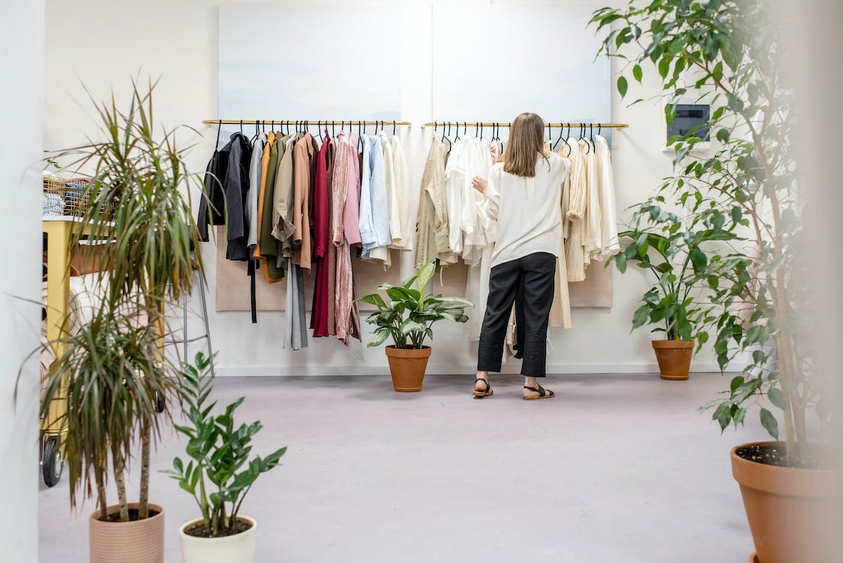In embracing an earth-conscious lifestyle, adopting vegan fashion is one of the best decisions you can make. It involves opting for items that are free of animal-derived materials, such as leather, silk, and fur. Instead, this conscientious way of dressing turns to cruelty-free alternatives, paving the way for a more compassionate future.
In this article, we’ll explore why vegan fashion isn’t merely a trend, but a lifelong commitment worth making. We’ll also share some tips to help you facilitate a seamless transition to cruelty-free style.
What’s Wrong with Non-Vegan Fashion?
Many consumers are unaware of this grim reality of non-vegan fashion: that countless animals exist solely for their skin and fur. Regarded as commodities, they endure years of confinement in deplorable conditions—unclean, uncontrolled, and severely crowded. All of that suffering, just to make clothes that will likely be discarded after seven wears. Even the animals that aren’t destined for slaughter lead long, miserable lives, leaving one to wonder if it’s truly worth it. (The only answer is no).
Here are a few examples of what many animals have to endure, all for the sake of style:
Wool
Sheep are regularly shorn for wool. Many PETA investigations have exposed just how brutal this experience can be, due to the constant abuse they’re subjected to. In many cases, this inhuman treatment can leave them with life-threatening injuries.
Leather
The luxury industry often faces criticism for its use of leather, and it’s easy to see why. From cows to snakes, millions of creatures are skinned every year—some while still alive. In addition, a significant portion of the world’s leather comes from developing countries such as China and Brazil. Welfare laws are often ignored in these regions, so you can only imagine the horrors the animals go through.
Silk
The production of silk is a cruel process. Instead of waiting for silkworms to come out of their cocoons naturally, thousands of them are boiled alive, all for a single pound of silk. Producers claim that it’s the only way to obtain a softer thread, but it remains a cruel process, especially since worms can feel pain.
Why is Vegan Fashion a Better Alternative?
Vegan fashion opposes the exploitation of animals in any form. This is why the term “cruelty-free” is often used to describe this conscious fashion choice. Beyond its fabrics, it doesn’t use any kind of animal-derived material for its components, from its glues to dyes.
Vegan fashion is also more than what clothes are made of. It’s committed to ethical and eco-conscious practices across the entire supply chain. This means it keeps greenhouse gas (GHG) emissions to a minimum, guarantees fair pay and safety for workers, and protects the communities where garments are made.
Embracing Vegan and Cruelty-Free Fashion
Committing to a vegan wardrobe can be a challenge. Here are a few tips to keep in mind as you make the cruelty-free shift:
Avoid Fast Fashion Brands
It can be tempting to buy vegan clothing from fast fashion brands because of their cheap price tags. But be careful—even if a piece of clothing is made of vegan materials, that doesn’t mean it’s sustainably made.
The fast fashion industry is inherently bad, contributing to more than 10% of global GHG emissions. It goes through trends extremely fast, leaving millions of tons of textile waste in its trail. What’s more, it’s depleting non-renewable resources at a dangerously rapid rate, particularly with its use of water. To put things in perspective, it takes 2,700 tons of water to make one cotton shirt.
As we’ve mentioned, veganism contemplates the whole supply chain. Rather than supporting fast fashion, it’s better to favor sustainable shopping. Turn your attention to small businesses, as they tend to be more mindful of their practices.
Shop Mindfully
Part of adopting a sustainable wardrobe is reducing waste where you can. While vegan items have a lower carbon footprint than their non-vegan counterparts, it’s still crucial to avoid overconsumption. Instead of indulging in a cruelty-free shopping spree, be thoughtful about your buys. Acquire only clothes you’re certain you’ll wear, and make a conscious effort to maximize each item’s use.
Get to Know Your Fabrics
Going vegan with your wardrobe doesn’t mean you’ll never be in style. There are plenty of cruelty-free fabrics to choose from, which are as good as—if not better—than non-vegan options. Here are a few vegan-approved materials that won’t compromise your aesthetic:
- Cotton
- Linen
- Polyester
- Pinatex (made from pineapple leaf)
- Faux leather
Continue Wearing Your Existing Non-Vegan Clothes
Don’t worry—you won’t get judged if you continue wearing the non-vegan clothes in your closet. Throwing them away is more wasteful, so feel free to wear them until they’re worn out. If your pre-vegan self owned a genuine leather bag, don’t be afraid to use it. Just avoid adding any more non-vegan items to your wardrobe.
Ready to Make the Vegan Shift?
Fashion often comes at the expense of animals, but it doesn’t have to be that way. Saying yes to cruelty-free style can be your way of taking a stand for them, while living more sustainably. By simply changing what you wear, you can contribute to transforming the fashion industry for the better.


Pingback: What Are The Defining Fashion Trends For 2022?
Pingback: 4 Yummy Snacks That Are Both Vegan And Healthy